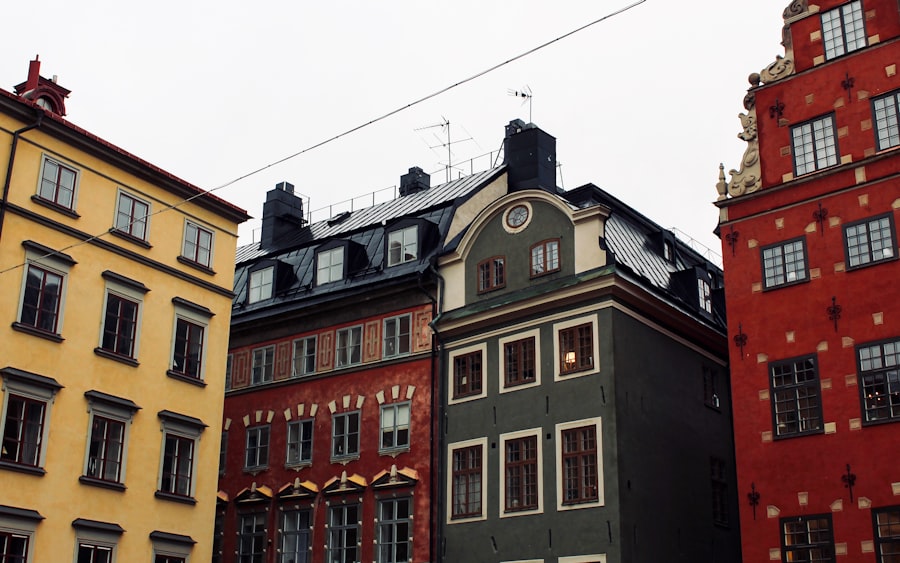Download links
How to install Restoration of Manila Cathedral: A Symbol of Resilience APK?
1. Tap the downloaded Restoration of Manila Cathedral: A Symbol of Resilience APK file.
2. Touch install.
3. Follow the steps on the screen.
Description
The Manila Cathedral, officially known as the Cathedral-Basilica of the Immaculate Conception, has a rich and storied history that dates back to the Spanish colonial period. The original structure was built in 1581, making it one of the oldest churches in the Philippines. It was initially constructed as a simple wooden structure to serve as the seat of the Archdiocese of Manila.
Over the years, the cathedral underwent several reconstructions due to various calamities, including fires and earthquakes that plagued the region. The first stone structure was completed in 1592, but it was not until 1626 that it was consecrated. Throughout its history, the Manila Cathedral has been a witness to significant events in Philippine history.
It has served as a venue for important ceremonies, including the ordination of bishops and the wedding of prominent figures. The cathedral has also been a site of political significance, hosting the funeral of national heroes and leaders. The building’s evolution reflects not only the architectural trends of its time but also the socio-political changes in the Philippines, making it a living testament to the country’s colonial past and its journey toward independence.
Key Takeaways
- Manila Cathedral has a rich history dating back to the Spanish colonial period, with the first church being built in 1571.
- The cathedral has faced destruction and restoration multiple times, with the most recent restoration efforts being completed in 2014 after damage from natural disasters.
- Symbolism of Manila Cathedral includes its role as the seat of the Archbishop of Manila and its significance as a symbol of faith and resilience for the Filipino people.
- The architectural significance of Manila Cathedral lies in its blend of different architectural styles, including Romanesque, Renaissance, and Baroque influences.
- Manila Cathedral has played a crucial role in Filipino culture and history, hosting important events such as the visit of Pope John Paul II and the coronation of several Spanish governors-general.
Destruction and Restoration
The Manila Cathedral has faced numerous challenges throughout its existence, particularly in terms of destruction and subsequent restoration efforts. The most devastating event occurred during World War II when the cathedral was heavily bombed by Japanese forces in 1945.
In the years following the war, efforts to restore the cathedral began in earnest. The restoration was led by architect Fernando Ocampo, who aimed to preserve the historical integrity of the building while incorporating modern architectural techniques.
The new structure was completed in 1958, featuring a blend of Romanesque and Gothic styles that paid homage to its historical roots. This restoration not only revived the physical structure but also rekindled the spiritual significance of the cathedral for the Filipino people.
Symbolism of Manila Cathedral

The Manila Cathedral stands as a powerful symbol of faith and resilience for Filipinos. Its towering façade and intricate details represent not only religious devotion but also national identity. The cathedral is often seen as a beacon of hope, particularly during times of crisis.
Its enduring presence amidst the tumultuous history of the Philippines serves as a reminder of the strength and perseverance of its people. Moreover, the cathedral embodies the fusion of various cultural influences that have shaped Filipino identity over centuries. The blend of indigenous, Spanish, and American elements in its architecture reflects the diverse heritage of the nation.
As such, it is not merely a religious edifice but also a cultural landmark that encapsulates the story of a nation grappling with its past while striving for a brighter future.
Architectural Significance
| Building | Architectural Significance |
|---|---|
| Empire State Building | Iconic Art Deco skyscraper, symbol of New York City |
| Sydney Opera House | World-renowned for its unique sail-like design |
| Taj Mahal | Masterpiece of Mughal architecture, UNESCO World Heritage Site |
Architecturally, the Manila Cathedral is a remarkable example of neo-Romanesque design, characterized by its grand arches, intricate carvings, and impressive bell tower. The current structure features a façade adorned with statues and reliefs that depict biblical scenes, showcasing the artistry and craftsmanship of Filipino artisans. The use of local materials in its construction further emphasizes its connection to Philippine culture and geography.
The cathedral’s interior is equally striking, with high vaulted ceilings and stained glass windows that filter light into a kaleidoscope of colors. These windows depict various saints and biblical narratives, enhancing the spiritual atmosphere within. The altar is another focal point, intricately designed and often adorned with flowers during liturgical celebrations.
The architectural elements work harmoniously to create a space that invites reflection and reverence.
Role in Filipino Culture and History
The Manila Cathedral has played an integral role in shaping Filipino culture and history. As a center for Catholic worship, it has been pivotal in fostering religious practices among Filipinos. Major religious events such as Christmas Masses, Holy Week observances, and other significant liturgical celebrations draw thousands of devotees each year, reinforcing communal bonds and shared beliefs.
Beyond its religious significance, the cathedral has also served as a venue for national events that resonate deeply with Filipino identity. It has hosted state funerals for prominent figures such as former presidents and national heroes, marking moments of collective mourning and remembrance. Additionally, it has been a site for various social movements, reflecting the evolving political landscape of the Philippines.
This multifaceted role underscores how deeply intertwined the cathedral is with both individual faith and national consciousness.
Importance of Restoration

The restoration of Manila Cathedral is not merely an architectural endeavor; it is a vital act of cultural preservation. As one of the most significant religious structures in the Philippines, its restoration ensures that future generations can appreciate its historical and spiritual value. The cathedral serves as a repository of collective memory, housing stories that span centuries and embody the struggles and triumphs of the Filipino people.
Moreover, restoring such an iconic structure contributes to national pride and identity. It reinforces a sense of belonging among Filipinos, reminding them of their shared heritage and values. The restoration process itself often involves community engagement, fostering a sense of ownership among local residents who take pride in preserving their cultural landmarks.
This communal effort strengthens ties within society while promoting awareness about the importance of heritage conservation.
Challenges Faced During Restoration
Restoring Manila Cathedral has not been without its challenges. One significant hurdle has been securing funding for extensive restoration projects. Given the scale of work required to restore such an iconic structure, financial resources are often limited.
This necessitates collaboration between government agencies, private donors, and non-profit organizations to ensure that restoration efforts can proceed without compromising quality. Additionally, maintaining historical accuracy while incorporating modern safety standards poses another challenge for architects and restorers. Balancing these two aspects requires careful planning and expertise to ensure that any new additions or modifications do not detract from the cathedral’s historical integrity.
Furthermore, environmental factors such as pollution and climate change have raised concerns about long-term preservation strategies, prompting ongoing discussions about sustainable practices in heritage conservation.
Future Plans for Manila Cathedral
Looking ahead, there are ambitious plans for further enhancing Manila Cathedral’s role as a cultural and spiritual hub. Future initiatives may include expanding educational programs aimed at promoting awareness about the cathedral’s history and significance among younger generations. These programs could involve guided tours, workshops on traditional crafts used in restoration efforts, and interactive exhibits that engage visitors with the cathedral’s rich narrative.
Moreover, there is potential for leveraging technology to enhance visitor experiences through virtual tours or augmented reality applications that provide deeper insights into architectural features and historical events associated with the cathedral. Such innovations could attract a broader audience while fostering appreciation for this iconic landmark. In addition to educational initiatives, ongoing maintenance and preservation efforts will remain crucial to ensuring that Manila Cathedral continues to stand as a symbol of faith and resilience for generations to come.
As urban development continues to reshape Manila’s landscape, safeguarding this historic site will require vigilance and commitment from both local authorities and community members alike. Through these collective efforts, Manila Cathedral can continue to inspire awe and reverence while serving as a testament to Filipino culture and history.
FAQs
What is the Manila Cathedral?
The Manila Cathedral, also known as the Metropolitan Cathedral of the Immaculate Conception, is a Roman Catholic basilica located in the Intramuros district of Manila, Philippines.
When was the Manila Cathedral built?
The original Manila Cathedral was built in 1581, but it has been destroyed and rebuilt several times due to natural disasters and wars. The current structure was completed in 1958.
What is the architectural style of the Manila Cathedral?
The Manila Cathedral features a combination of different architectural styles, including Baroque, Neo-Romanesque, and Neo-Byzantine influences.
What is the significance of the Manila Cathedral?
The Manila Cathedral is a significant religious and cultural landmark in the Philippines. It has been the site of many important events in the country’s history, including the papal visits of Pope Paul VI, Pope John Paul II, and Pope Francis.
Is the Manila Cathedral open to the public?
Yes, the Manila Cathedral is open to the public for worship, prayer, and guided tours. Visitors are welcome to explore the cathedral’s interior and learn about its history and significance.





